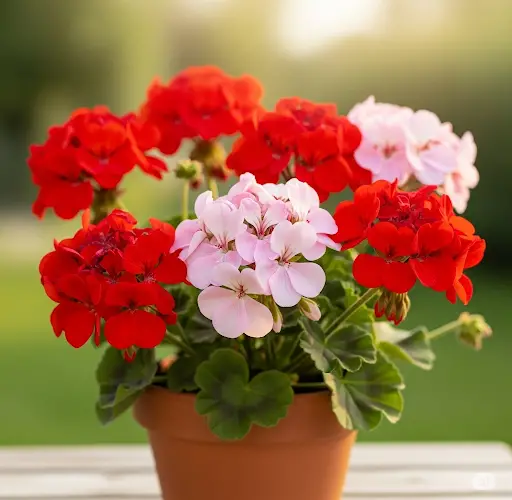As the days get longer and temperatures begin to rise, it’s time to help your geraniums shake off their winter slumber and prepare for a season full of vibrant blooms. With just a few simple steps, you can wake up your dormant geraniums, encourage the growth of sturdy flower stalks, and enjoy large, colorful buds throughout the spring and summer.
Whether you’ve overwintered your geraniums indoors or kept them in a cool, dormant state, spring is the ideal time to rejuvenate the plant and set the stage for impressive flowering. Here’s how to do it.
Step 1: Bring Geraniums into the Light
If your geraniums have been stored in a dark, cool area over winter (such as a basement or garage), the first thing they need is light. Move the plants to a bright location where they can receive at least 5–6 hours of sunlight per day. A south-facing window is ideal.
For leggy or weakened plants, start by placing them in filtered light and gradually increase their exposure over the next few days. This helps prevent shock from sudden changes in lighting conditions.
If you’ve kept your geraniums on a windowsill all winter, now is the time to increase the intensity of light they receive. Clean the window glass and rotate the pots every few days to ensure even growth.
Step 2: Prune Back Old Growth
Geraniums that have been dormant or semi-dormant over winter will often develop thin, woody, or leggy stems. Pruning is essential to wake the plant up and direct its energy toward new growth and flower production.
-
Trim all spindly or dry stems using clean, sharp scissors or pruning shears.
-
Cut back the plant by about one-third, leaving at least a few healthy leaf nodes on each stem.
-
Remove any yellowing leaves or dried-up flowers.
This process stimulates branching and encourages the plant to produce multiple flower stalks rather than just one or two.
Step 3: Change the Soil (if needed)
If your geraniums were left in their pots over winter, the soil might have become compacted, depleted, or poorly draining. Spring is a good time to refresh the soil or completely repot the plant into a slightly larger container.
Recommended soil mix:
-
2 parts light potting soil
-
1 part perlite or coarse sand for drainage
-
Optional: a handful of compost or worm castings for nutrients
Avoid heavy or soggy soil, as geraniums prefer a light, airy mix that allows roots to breathe.
Step 4: Start Watering Gradually
Begin watering your geraniums lightly. After a dormant period, they don’t need heavy watering right away. Check the soil with your finger—only water when the top 2–3 cm is dry.
Gradually increase the watering frequency as new leaves appear and growth picks up. Always avoid letting the soil stay constantly wet, as this can lead to root rot.
Step 5: Feed for Flowers
To help geraniums produce lush leaves and large flower buds, fertilize every 2–3 weeks with a balanced liquid fertilizer. For example:
-
Use a 10-10-10 or 20-20-20 formula to promote overall plant health.
-
As buds start to appear, switch to a fertilizer higher in phosphorus (middle number), such as 10-20-10, to stimulate abundant flowering.
Organic options like compost tea or fish emulsion also work well and improve soil health over time.
Step 6: Pinch and Shape for Bushiness
Once your geranium has several sets of new leaves, pinch off the tips of the main stems. This encourages the plant to branch out and grow in a more compact, bushy form, which in turn leads to more flowering points.
Pinching is simple: just remove the topmost 1–2 cm of the stem, just above a set of leaves or buds.
Repeat this process every few weeks through spring to maintain a full, rounded shape.
Step 7: Harden Off Before Moving Outdoors
If you plan to move your geraniums outside for the summer, don’t rush. Start by taking the pots outdoors for a few hours each day in a shady, protected area. Gradually increase sun exposure and time spent outside over 7–10 days.
This process, known as hardening off, helps your geraniums adjust to outdoor conditions and prevents sunburn or shock.
Conclusion
With a little care and attention in early spring, you can transform sleepy geraniums into blooming beauties. By giving them light, pruning away old growth, refreshing the soil, and providing the right nutrients, your plants will quickly respond with lush foliage, multiple flower stems, and large, vibrant blooms that last throughout the season.
Now is the perfect time to wake up your geraniums—your balcony or garden will thank you with a burst of color in just a few weeks.



